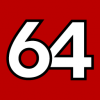-
Posts
12439 -
Joined
-
Last visited
-
Days Won
554
Content Type
Profiles
Forums
Events
Everything posted by Fiery
-
We've recently implemented Copy and Copy All items in the right-click context menu of the Manage User Results window. Make sure to upgrade to the latest beta version of AIDA64 Extreme available at: http://www.aida64.com/downloads/latesta64xebeta After upgrading to this new version, make sure to restart Windows to finalize the upgrade. After copying the results to the Clipboard, you can paste them into Excel or Notepad or any other application.
-
We've already asked Aquacomputer to provide programming details on the new Aquastream Ultimate, but received no response so far. Unfortunately it doesn't look similar to the old Aquastream on the registers level, so we definitely need Aquacomputer's assistance to implement support for it.
-
AFAIK detecting GPS chip in mobile devices is not possible due to lack of direct access to the device. Providing location information would require asking for one more Android system permission. And several Android device owners are sensitive about permissions. They get suspicious if an app requires too many of them, and so may refuse to use our app. So we're ambivalent about expanding the capabilities of our app if it would require requesting more permissions. Regards, Fiery
-

Benchmark Comparison Systems
Fiery replied to David Schwarz's topic in Benchmarking, system performance
The type of graphics card doesn't affect the benchmark scores, hence it wouldn't be useful to indicate it in the list of reference benchmark results. Regards, Fiery- 2 replies
-
- 1
-

-
- Comparison
- GPU
-
(and 2 more)
Tagged with:
-
Thank you. I suppose the issue is that you've removed Corsair Link software, and it also removed the DLL file (called SiUSBXp.dll) that is necessary for AIDA64 to work properly with Asetek LC compatible devices. You need to either install the Corsair Link v4 software again, or get a 32-bit version of the mentioned DLL and copy it into AIDA64 installation folder. Please drop me a private message if you get into troubles getting that file, and I'll send it to you. As for SIV and AIDA64, yes, they both use industry standard synchronization mutexes to make sure they can work together, handling the same devices without collisions. Generally speaking, 3rd party software are in most cases synchronized with each other. It's certain software made by big hardware companies that tend to lack the necessary synchronization.
-

ASRock X79 Extreme11 only showing South Bridge Fan RPM
Fiery replied to Nebulaner's topic in Bug reports
Are you running ASRock's own monitoring software in the background? It may interfere with AIDA64, especially about the fan muxing that your motherboard uses. -

ASRock X79 Extreme11 only showing South Bridge Fan RPM
Fiery replied to Nebulaner's topic in Bug reports
Do you have the fan connected to the CPU1 or CPU2 fan header? AIDA64 may be able to pick it up if you connect it to the other CPU fan header. Regards, Fiery -
Please right-click on the bottom status bar of AIDA64 main window --> System Debug --> USB Dump. Copy-paste the full results into this topic, or attach the results as a TXT file to your post. You may need to enable status bar in AIDA64 / main menu / View first. Thanks, Fiery
-
As far as I know, Aquacomputer offers Aqua Suite that works fine with AIDA64 and other monitoring software. But you should ask around in the enthusiasts users circles, because quite frankly, we're not experts of water-cooling here There may be other products around there that could fit the requirements.
-
AFAIK both Asetek and CoolIT based units require 3rd party software to work exclusively So replacing the unit would most likely not help at all about the concurrency issue
-
The fans should still be spinning at the last setting. It's not our fault that CL Software cannot work with other software running in the same time Yes, it should work.
-
There's no Corsair page specifically. And no, AIDA64 cannot control fan speed in general. The Asetek option in the Preferences is only a workaround, to avoid AIDA64 inadvertently altering the fan speed when reading out the actual fan RPM value. The Asetek option should work for H110i GTX, but not for non-Asetek-based water cooler solutions. The 2 percents are for the 2 fans of Asetek water coolers. As for Corsair Link (CL), please note that for basically all Corsair PSUs and water cooler hardware, it's best to close Corsair's own software, since it would collide with the sensor code of AIDA64 (and other 3rd party software as well BTW). CL Software lacks the necessary SDK or API that would be used to properly synchronize a 3rd party software with CL Software. We and other developers keep asking Corsair to improve their software, but it hasn't worked out so far.
-
A misc power consumption value read from an Aquaero device.
-

fixed: MSI J1800I (MS-7877): Single Channel memory reported as Dual Channel
Fiery replied to nelsonhf's topic in Bug reports
Thank you for the feedback -
We used to offer AIDA16, a DOS based system information and benchmark utility. It was discontinued 12 years ago due to lack of interest from users. Nowadays we focus on mobile platforms, where there's the most demand for hardware diagnostics. Regards, Fiery
-
There're 3 temperatures and 1 fan speed measured for AXi. They should all be displayed on the Sensor page, as PSU #1..#3 temperatures and PSU fan. The latter is only displayed when the fan is spinning. AIDA64 doesn't represent sensor values per-device, but instead grouped by measurement type. So all temperatures are displayed under Temperatures for example.
-
The Corsair Link option in the Preferences will not affect your case, since your AXi PSU is not connected via a Corsair Link device, but directly using the USB dongle. And the sensor readings via the Corsair AXi PSU code should be present on the Sensor page. +3.3V, +5.5V and +12V rail current and power draw values should be there for example. BTW, if you want to check the Sensor page values with and without using the AXi module, just right-click on the bottom status bar of AIDA64 main window --> HWMon Modules --> Corsair AXi / HXi / RMi. You don't even have to restart AIDA64 to switch that option. But you may need to enable status bar in AIDA64 / main menu / View first.
-
It should work just fine. The new readings should appear on the Computer / Sensor page. They may overwrite other values, like +5V and +12V that are read via other sensor devices.
-
Please send me your AIDA64 Business product key in private message, and I'll send you a download link to a new AIDA64 Business beta update that implements Corsair Link support.
-
Okay. Then please let me know what's wrong with the latest beta. Does it make Windows pop up the same message as in your opening post?
-
You're right, AIDA64 does not try to create a VkDevice. It uses vkEnumeratePhysicalDevices, vkGetPhysicalDeviceProperties and vkGetPhysicalDeviceFeatures. In case a driver reports meaningful information through those API calls, I don't think it's wrong to assume there's a physical device there that supports Vulkan. In case the video driver mistakenly provides physical device information for such devices that are not really supported by Vulkan, it's the bug of the video driver and not the fault of AIDA64 or VK-Z.
-
Maybe, in the future. So far the only limitation of using 32-bit interface is the remote heap size detection issue.
-
Thank you for the feedback. AIDA64 uses 32-bit interface to acquire Vulkan information. So the remote heap size -- as you've pointed out -- will be somewhat limited. But that value is still relevant to indicate how 32-bit applications are handled by Vulkan.
-

Incomplete sensor readings on MSI X99A Godlike Gaming
Fiery replied to MiHi76's topic in Hardware monitoring
Please right-click on the bottom status bar of AIDA64 main window --> Sensor Debug --> ISA Sensor Dump. Copy-paste the full results into this topic, or attach the results as a TXT file to your post. You may need to enable status bar in AIDA64 / main menu / View first. Also right-click on the bottom status bar of AIDA64 main window --> Sensor Debug --> SMBus Dump (Full). Copy-paste the full results into this topic, or attach the results as a TXT file to your post. Make sure to use the latest beta version of AIDA64 Extreme available at: http://www.aida64.com/downloads/latesta64xebeta After upgrading to this new version, make sure to restart Windows to finalize the upgrade. Thanks, Fiery

